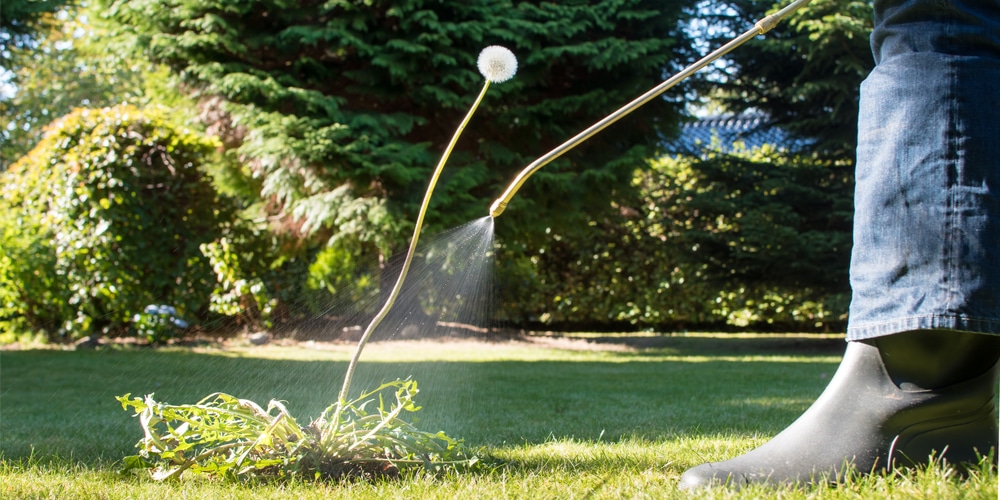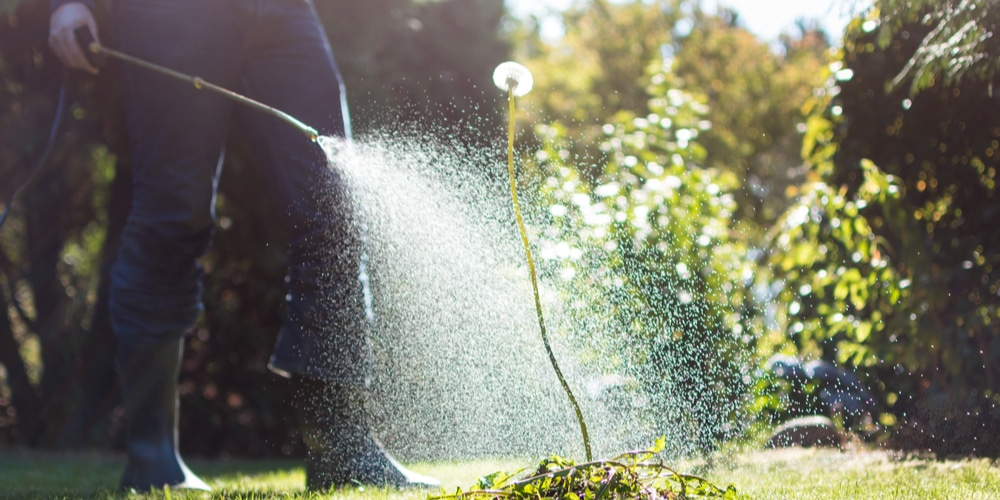St Augustine tolerates shade, but it does not like it. On the other hand, most weeds love to creep and multiply in the tree shadows and dark places. The good news is that as soon as your grass comes out of its transition stage, you can begin treating weeds and make your yards beautiful again.
How do I get rid of weeds without killing St. Augustine grass? A simple way to deal with weeds in St Augustine grass is cutting down some trees.
Or at least some of the branches that create the shade where the weeds take over your grass. You may also want to be careful when using herbicides because St Augustine can be sensitive to some chemicals.
The cause of your messy lawn might be hard to identify, but there are ways to deal with it.
How To Treat Weeds In St Augustine Grass

Look For Desirable Turfgrass Before You Begin
Once you killed all the weeds in St Augustine grass, your lawn might have several bare spots. And while St Augustine spreads pretty quickly, recovery will take time. So, overseeding with fast-growing seeds is worth considering before you take action.
Depending on your action plan, you might want to overseed before or after the treatment. In general, herbicide allows you to sow new seeds only after the chemicals degrade.
But if you only need to treat small areas and eradicate some weeds by hand, you can overseed first to avoid leaving the seeds in the open for the birds to eat.
1 – Using Selective Post-emergence Herbicide
Selective herbicides that you can use on St Augustine and other turfgrass contains Metsulfuron methyl. You only need a quarter ounce per acre.
Dilute it in 12 gallons of water, and then you can spray your lawn. And you can enhance its effectiveness by adding some surfactant to help the herbicide stick to the weeds.
Most broadleaf weeds will wilt within a few days after the first treatment. But you might have to target some weeds like ground ivy with specific products because they are more resistant than the rest.
2 – Fertilize The St Augustine Grass
While you want to take measures against the weeds in St Augustine grass, you had better fertilize those areas in your lawn where no weed appears. How? The best way is to use a slow-release fertilizer.
It will help your St Augustine spread and recover over the course of the following months. For the best results, fertilize in spring to give your grass time to recover during the summer.
Choose a high-nitrogen fertilizer for your St Augustine grass. It will allow for explosive growth and fast recovery. St Augustine will use that nitrogen to send out many stolons and take over any bare spot left behind by the dying weeds.
Regularly fertilizing your St Augustine lawn with high-nitrogen fertilizer will help your grass dominate the yard. So no weed can settle safely ever again.
3 – Spot Treat Affected Areas
Most weeds in St Augustine grass will not survive if you provide nutrients and water to your turf. And if you act quickly in springtime, you will not have any problems for the rest of the year because the thick St Augustine will choke any weed trying to grow in your yard.
Luckily, you can find several weed killer products on the market. So, you can test them to see what works better for your lawn.
The best time to apply a commercial weed killer is in the morning or later at night. Why?
Because most compounds in them do not perform well at temperatures in the 80-90 F range. If you apply early enough, you will give it about five hours to work its magic, and it will save you a lot of money in the long run.
And remember not to water the treated areas for a couple of days. Otherwise, the product will not have time to reach the weeds’ roots.
4 – Remove Tough Weeds During Winter
Some weeds in St Augustine grass remain green all year round. So they are easy to spot. For example, dallisgrass goes dormant in the winter but perks back up as soon as the temperatures rise above 60F. And during the cold season, it maintains a vibrant green color.
Winter is the best time to use non-selective weed control products. But this option comes with the obvious risk of killing part of your yard. The upside is that you will not need to use pre-emergent products later, which are not necessary anyway if you keep the healthy St Augustine lawn well-fed.
